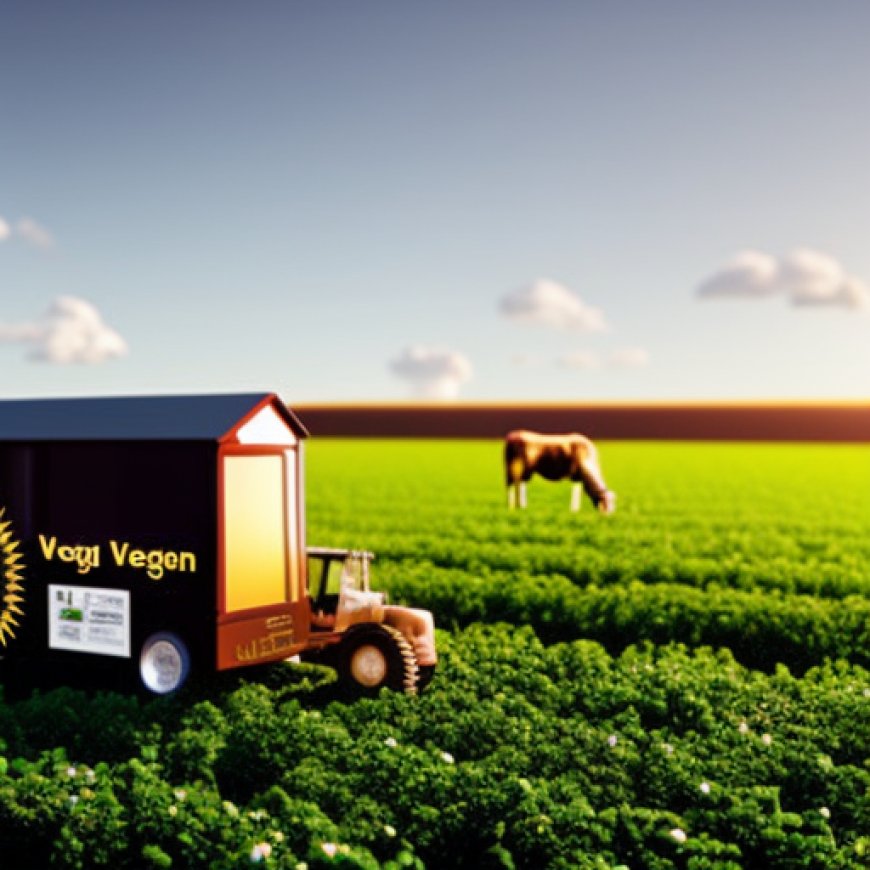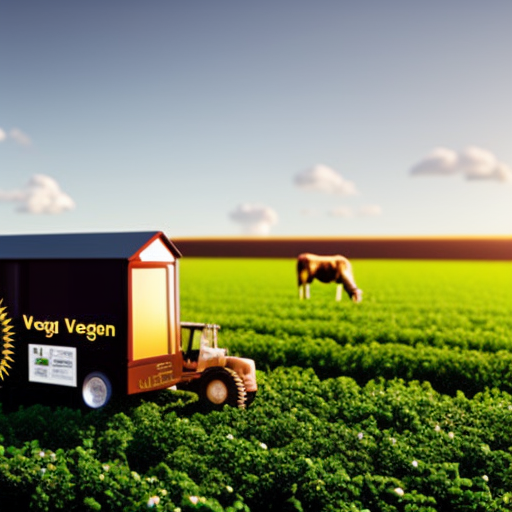82% of EU Agricultural Subsidies are Channeled into Climate-Damaging Animal Products – vegconomist – the vegan business magazine
82% of EU Agricultural Subsidies are Channeled into Climate-Damaging Animal Products vegconomist - the vegan business magazine


The European Union’s Common Agricultural Policy and its Impact on Sustainable Development Goals (SDGs)
The European Union’s Common Agricultural Policy channels a large proportion of its agricultural subsidies into supporting the production of emission-intensive animal-based foods.
According to a new study, 82% of EU agricultural subsidies are channeled into the production of emission-intensive animal products, with a portion being provided directly and another portion indirectly through feed subsidies. This practice is at odds with the European Green Deal and the growing calls for more sustainable and environmentally friendly agriculture.
An Analysis of Subsidies and Emissions
The analysis of global physical input-output datasets in conjunction with public subsidy data showed that the subsidy intensity for animal products increases significantly when the necessary feed is included. These animal products are associated with 84% of embodied greenhouse gas emissions from EU food production. Despite their high share of total emissions, these same animal products provide only 35% of calories and 65% of proteins.

Time to Level the Playing Field
In January of this year, the European Scientific Advisory Board on Climate Change released a report outlining several recommendations for addressing the climate crisis, including shifting subsidies away from animal agriculture. The authors stated that the common agricultural policy “should be better aligned with EU goals” and suggested shifting financial support “away from emission-intensive agricultural practices, including livestock production”.
Jeremy Coller, founder of FAIRR, which last year signed a statement urging the G20 group to reform “harmful” agricultural subsidies by 2030 to transition to net zero GHG emissions and restore nature by 2050, said: “Globally, governments are setting bold climate and nature goals, but in the same breath are undermining those ambitions with almost $500 billion in harmful agricultural subsidies for high-emitting commodities such as red meat. We need to realign subsidies to nature goals to support a transition for farmers and to ensure a level regulatory playing field for alternative proteins and other sustainable solutions.”
SDGs, Targets, and Indicators
| SDGs | Targets | Indicators |
|---|---|---|
| SDG 2: Zero Hunger | Target 2.4: By 2030, ensure sustainable food production systems and implement resilient agricultural practices that increase productivity and production, that help maintain ecosystems, that strengthen capacity for adaptation to climate change, extreme weather, drought, flooding, and other disasters, and that progressively improve land and soil quality. | Indicator 2.4.1: Proportion of agricultural area under productive and sustainable agriculture |
| SDG 12: Responsible Consumption and Production | Target 12.3: By 2030, halve per capita global food waste at the retail and consumer levels and reduce food losses along production and supply chains, including post-harvest losses. | Indicator 12.3.1: Food loss index |
| SDG 13: Climate Action | Target 13.2: Integrate climate change measures into national policies, strategies, and planning. | Indicator 13.2.1: Number of countries that have integrated mitigation, adaptation, impact reduction, and early warning into primary, secondary, and tertiary curricula |
| SDG 15: Life on Land | Target 15.2: By 2020, promote the implementation of sustainable management of all types of forests, halt deforestation, restore degraded forests, and substantially increase afforestation and reforestation globally. | Indicator 15.2.1: Progress towards sustainable forest management |
Behold! This splendid article springs forth from the wellspring of knowledge, shaped by a wondrous proprietary AI technology that delved into a vast ocean of data, illuminating the path towards the Sustainable Development Goals. Remember that all rights are reserved by SDG Investors LLC, empowering us to champion progress together.
Source: vegconomist.com

Join us, as fellow seekers of change, on a transformative journey at https://sdgtalks.ai/welcome, where you can become a member and actively contribute to shaping a brighter future.







